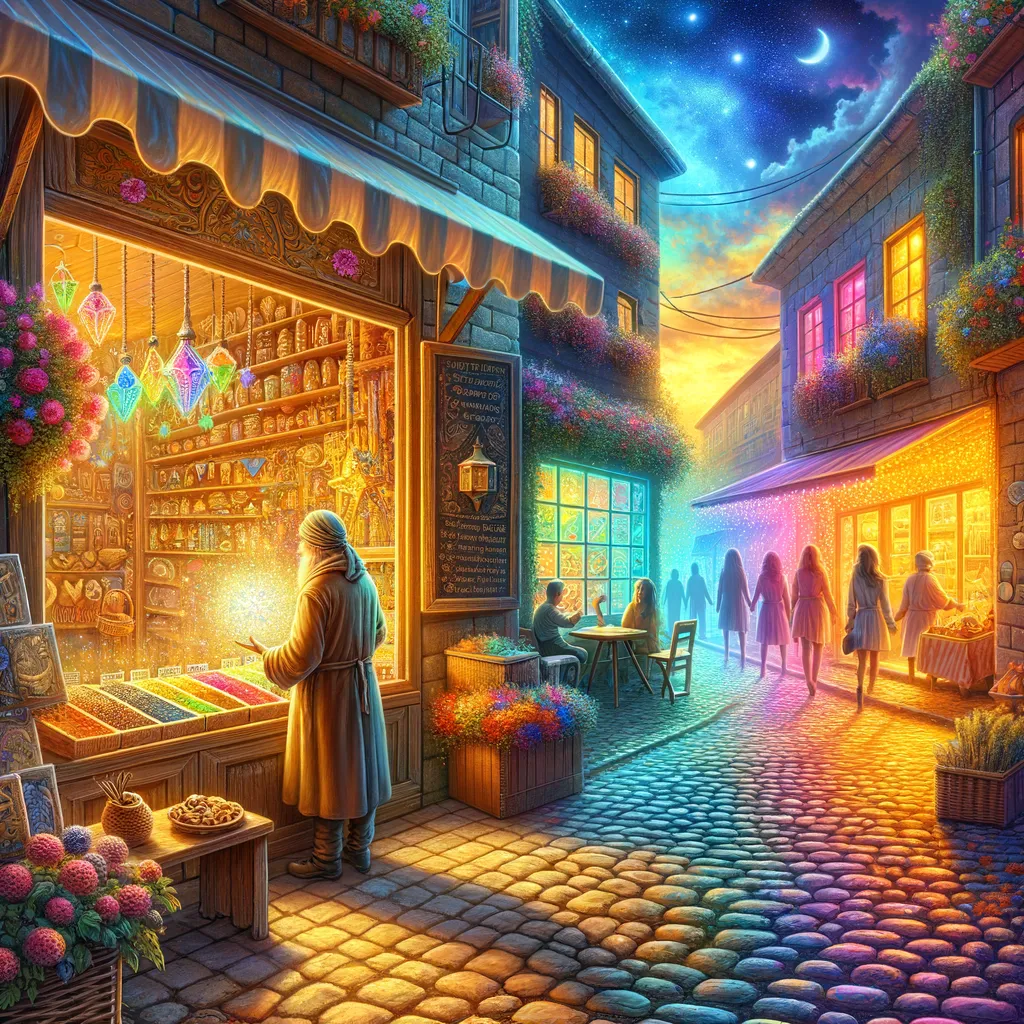Bridging Beliefs: A Garden of Unexpected Connections
In the vibrant swirl of a birthday party, two strangers, each anchored by their beliefs, stood apart like islands in a vast sea of ideology. Beneath the laughter and chatter, an unspoken tension pulsed between them, until a story about a resilient community garden unexpectedly shifted the atmosphere. As the narrator painted a vivid picture of blooming flowers and laughter, curiosity sparked in the eyes of the skeptic, revealing a shared humanity that transcended their differences. With each heartfelt story exchanged, the invisible boundary began to dissolve, replaced by a tapestry of connection woven from shared experiences. As the evening unfolded in laughter and understanding, the garden emerged not just as a backdrop but as a powerful symbol of their journey toward unity, reminding them that even in a divided world, there exists fertile ground for compassion and connection.
In the memory of August 26, 2010, I find myself in the midst of a gathering that buzzes with laughter and chatter, yet beneath the surface, an invisible line stretches taut between me and a stranger named Alex. We were both guests at a mutual friend’s birthday party, but the air crackled with the unspoken tension of differing beliefs. While I floated on a current of optimism and progressive ideals, Alex anchored himself firmly in tradition and skepticism. It was as if we were two islands, separated by a vast ocean of ideology, each of us peering across the waves, curious yet hesitant to bridge the distance.
As the night wore on, the room pulsed with energy, yet a thick fog of misunderstanding loomed over us. I caught glimpses of Alex’s expressions when certain topics arose—politics, environmentalism, the very fabric of societal values. Each time someone mentioned a progressive initiative, I could see his posture tighten, a subtle but unmistakable signal of resistance. It was as if our beliefs had cast shadows that danced between us, complicating any simple gesture of connection. I felt an urge to reach out, to understand, yet the fear of being rebuffed held me back.
Then came the moment that would unexpectedly shift the atmosphere. A mutual friend began to recount a story about a local community garden that had thrived against the odds. The tale resonated with many, but as I looked at Alex, I noticed something different. His brow furrowed, not out of disdain, but perhaps curiosity tinged with skepticism. It dawned on me that beneath the surface of our contrasting beliefs lay a shared humanity, a desire for connection and understanding, even if we approached the world from different angles.
In that instant, I decided to take a leap. I leaned closer, my voice low enough to weave into the fabric of the conversation without disrupting its flow. I spoke not of ideologies or policies but of the garden itself—the colors of the flowers, the laughter of children playing nearby, the way the earth smelled after rain. My words painted a vivid picture, and as I described the garden’s ability to unite people from all walks of life, I saw a flicker of recognition in Alex’s eyes.
To my surprise, he nodded, leaning in slightly, drawn by the vividness of the imagery rather than the concepts that usually divided us. It was as if the garden had become a bridge, a metaphor for what we both yearned for: connection, growth, and a space where differences could coexist. In that shared moment, I realized that the intangible boundary we had erected was not made of concrete but rather woven from our perceptions and assumptions.
As the evening unfolded, we began to share stories of our own experiences with community, each tale a thread that slowly intertwined our narratives. I spoke of how my grandmother had nurtured her own garden, teaching me about patience and resilience. Alex reciprocated with memories of family gatherings centered around tradition, where everyone contributed to the meal, each dish a testament to their heritage. The more we shared, the more the boundary began to dissolve, replaced by a tapestry of shared experiences and emotions.
With every story, I felt the distance between us shrink. Laughter bubbled up, and our eyes sparkled with newfound understanding. The garden, once just a backdrop to our differences, had transformed into a symbol of our shared humanity. In that moment, I was reminded of the power of storytelling as a means of connection—a gentle reminder that even the most disparate beliefs can find common ground.
As the night drew to a close, the music swelled, and the atmosphere shifted to one of celebration. We found ourselves standing side by side, our laughter mingling with the melodies that filled the air. In that fleeting moment, I realized that bridging the gap between contrasting beliefs was not about convincing the other to see things my way but rather about recognizing the threads that bind us in our shared human experience.
Reflecting on that evening now, I understand that the journey of connection often requires vulnerability and openness, a willingness to step beyond the barriers we construct. It is a delicate dance, one that can lead to unexpected alliances and deeper understanding. As I ponder the lessons from that night, I am left with a lingering question: In a world so often divided by belief, how can we cultivate gardens of understanding that bridge our differences?
In the garden of human experience, the most vibrant blooms often arise from the rich soil of shared stories, transcending the barriers of belief and inviting connection where once there was only distance.



